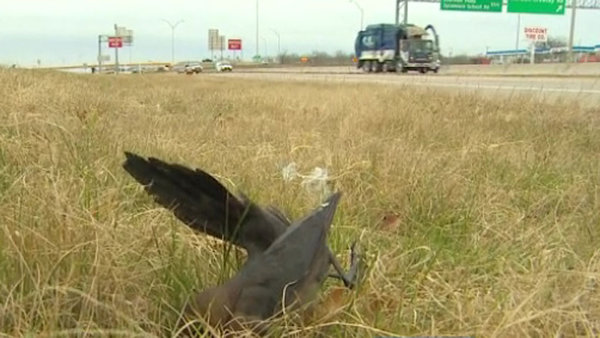
A strange scene prompted a lot of calls from concerned motorists Thursday morning: Dead starlings and grackles scattered on and around the Interstate-35W south service road at Alsbury Boulevard.
"The ones we found in the grass did not have any signs of trauma we could see," said Burleson animal control supervisor Kim Peckler.
Crews collected just over 200 dead birds, and one that died a short time later. Peckler said she's never seen anything like it in her 25 years of working with animal control.
Veterinarian Bob Denton did an initial search for clues.
"The first thing I noticed on this bird is his liver is enlarged," he said, examining a male grackle.
He said one bird had signs of sinus infection.
"The big thing you would worry about is toxins," he said. "Or maybe a virus."
Dr. Denton called the Texas Veterinarian Diagnostic Lab at A&M.
An avian expert told him the bird die-off probably is nothing to worry about.
"He actually said it's very common. You'll see that this time of year," Denton said.
He was told large groups of birds often die together due to a combination of cold weather swings, disease, and lack of food.
Comment: An "avian expert", eh...
Denton looked closely at the grackle's intestines during an autopsy.
"It doesn't look like he's eaten at all. His GI tract is completely empty," he said. "No food in his crop. Completely empty."
It could take weeks to learn whether the birds died from something other than natural causes.



Comment: Yes, this is common NOW (as in, the last 3 or so years). No, this is not 'normal'.
There were two similar incidents in the Arlington/Fort Worth area last year and in 2012: Then consider that 'loud booms' and meteors have been exploding overhead with increasing regularity lately, and that investigations into some of these mass bird deaths around the world are the result of 'blunt force trauma of unknown origin'... We know that many more of these things must be exploding above the US on a regular basis because it's the rare one that is actually seen/heard.